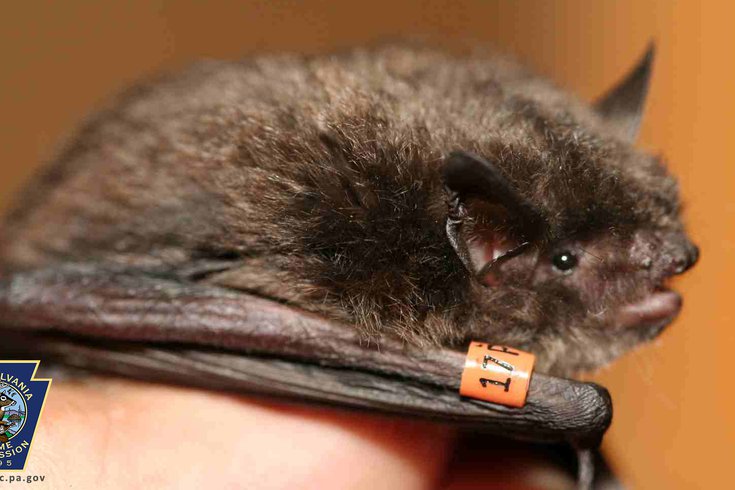
March 10, 2022
 Courtesy/Pennsylvania Game Commission
Courtesy/Pennsylvania Game Commission
Indiana bats are a federally endangered, cave-dwelling species that lives primarily in the Midwest. Smaller populations in Pennsylvania are tracked by the Game Commission to aid in conservation efforts.
A tiny female bat weighing no more than 10 paper clips has completed the longest-known migration of her species in a single season, according to the Pennsylvania Game Commission.
The Indiana bat, a federally endangered species, is native to the Midwest and tends to have its largest populations in the caves of Indiana, Kentucky and Missouri. The species is found in much of the eastern U.S., including Pennsylvania, but has experienced significant decline over the last 50 years due to habitat disturbance and the ravaging spread of white-nose syndrome, a disease caused by fungus.
Last September, the Pennsylvania Game Commission banded and placed radio transmitters on bats from the last-known Indiana bat colony of breeding females in Pennsylvania. The bats received bright orange bands on their wings and 21-day transmitters on their backs.
The research is intended to help wildlife experts monitor migration patterns and determine where the bats hibernate so that conservation resources can be maximized.
During the course of the study, the Game Commission tracked a single female bat that flew at least 418 miles from her summer roost in Pennsylvania to a winter cave in Carter County, Kentucky. That distance represents a straight line, meaning the bat likely flew an even longer distance to arrive at her destination.
This is incredible! 🦇 The Pennsylvania Game Commission recorded the longest known migration of the federally endangered...
Posted by Pennsylvania Game Commission on Thursday, March 10, 2022
Indiana bats are sometimes called "the social bat" because they form large clusters in the caves where they hibernate. This helps them dampen disruptive sounds and collectively respond to the presence of predators.
In Pennsylvania, the Game Commission estimates that only about 1,000 Indiana bats hibernate at about 18 known sites in 11 counties. The stability of these cave sites are reinforced by the installation of gates, which have sometimes been successful in drawing bats back to locations they have abandoned due to human encroachment. Indiana bats also are known to sometimes inhabit man-made structures such as mines, though the conditions of these tunnel sites are less favorable to them than natural caves.
The fungus that causes white-nose syndrome is found in some cave habitats and grows on bats' skin. This disturbs their their hibernation leaves bats dehydrated, which often results in starvation and death. Pennsylvania is part of a multi-state program to create a regional response to white-nose syndrome.
Indiana bats and many other threatened bat species play an important ecological role as the primary predators of night-flying insects and anthropoids that wreak havoc on crops. Bats also pollinate and disperse the seeds of hundreds of plant species in the United States.
In addition to annual studies on bat populations, the Pennsylvania Game Commission conducts research on highway design and man-made obstacles to the recovery of Indiana bats. The Game Commission also works with private consultants and university researchers to develop knowledge of the bats' behavior that aids ongoing conservation efforts.